Physical activity for treatment of irritable bowel syndrome
- PMID: 35766861
- PMCID: PMC9243367
- DOI: 10.1002/14651858.CD011497.pub2
Physical activity for treatment of irritable bowel syndrome
Abstract
Background: Current recommendations for people with irritable bowel syndrome (IBS) to partake in physical activity are based on low-level evidence, do not incorporate evidence from all available randomised controlled trials (RCTs) and provide little information regarding potential adverse effects.
Objectives: To assess the benefits and harms of physical activity interventions in adults diagnosed with irritable bowel syndrome and to explore possible effect moderators including type, setting and nature of physical activity interventions.
Search methods: We searched nine electronic databases including CENTRAL, MEDLINE and Embase to 5 November 2021. We handsearched reference lists and sought unpublished studies through trial registries.
Selection criteria: We included RCTs involving adults (aged 18 years or older) diagnosed with IBS and conducted in any setting comparing a physical activity intervention with no intervention, usual care or wait-list control group or another physical activity intervention group and assessing a validated measure of symptoms, quality of life or bowel movement.
Data collection and analysis: At least two review authors independently selected studies for inclusion, extracted study data, and performed risk of bias and GRADE assessments to assess the certainty of evidence. We pooled studies that evaluated similar outcomes using a random-effects meta-analysis, and synthesised data from other studies narratively.
Main results: We included 11 RCTs with data for 622 participants. Most (10/11) were set in high- or middle- to high-income countries, with five involving supervised physical activity, three unsupervised activity and three a mix of supervised and unsupervised activity. No trial was at low risk of bias. Four trials specified a minimally important difference for at least one assessed outcome measure. Data for 10 trials were obtained from published journal articles, with data for one obtained from an unpublished Masters degree thesis. Irritable bowel syndrome symptoms Six RCTs assessed the effectiveness of a physical activity intervention compared with usual care on global symptoms of IBS. Meta-analysis of five studies showed an observed improvement in reported symptoms following physical activity (standardised mean difference (SMD) -0.93, 95% confidence interval (CI) -1.44 to -0.42; 185 participants). We rated the certainty of evidence for this outcome as very low due to unclear and high risk of bias, inconsistency and imprecision from sparse data. This means physical activity may improve IBS symptoms but the evidence is very uncertain. The results of the remaining study supported the meta-analysis but were at unclear risk of bias and sample size was small. Two studies assessed the effectiveness of a yoga intervention compared with a walking intervention on global IBS symptoms. Meta-analysis of these two studies found no conclusive evidence of an effect of yoga compared with walking on IBS symptoms (SMD -1.16, 95% CI -3.93 to 1.62; 124 participants). We rated the certainty of evidence as very low, meaning the evidence is very uncertain about the effect of yoga interventions compared with walking interventions on IBS symptoms. Two studies assessed the effectiveness of a physical activity intervention (yoga) compared with medication. One reported no observed difference in global IBS symptoms, though CIs were wide, suggesting uncertainty in the observed estimates and risk of bias was high (MD -1.20, 95% CI -2.65 to 0.25; 21 participants). We excluded IBS symptom data for the remaining study as it used a non-validated method. One study compared a yoga intervention with a dietary intervention and reported an observed improvement in symptoms with both interventions but neither intervention was superior to the other. Quality of life Five RCTs assessed the impact of physical activity on self-reported quality of life compared with usual care. Meta-analysis of data from four studies found no improvement in quality of life following a physical activity intervention (SMD 1.17, 95% CI -0.30 to 2.64; 134 participants; very low certainty due to risk of bias, inconsistency and imprecision). We rated the certainty of evidence as very low, meaning the evidence is very uncertain about the effect of physical activity interventions on quality-of-life outcomes in people with IBS. One study assessed the impact on quality of life of a yoga intervention compared with walking and observed an improvement in the yoga group (MD 53.45, 95% CI 38.85 to 68.05; 97 participants ). One study reported no observed difference in quality of life between a yoga and a dietary intervention. Abdominal pain Two trials assessed the impact of physical activity compared with usual care on reported abdominal pain. Meta-analysis found no improvement in abdominal pain with physical activity compared with usual care (SMD 0.01, 95% CI -0.48 to 0.50; 64 participants). We rated the certainty of the evidence as very low due to risk of bias and imprecision, meaning the evidence is very uncertain about the effect of physical activity interventions on abdominal pain in people with IBS. One study assessing the impact of a yoga intervention compared with walking advice reported no observed differences between groups on abdominal pain. One study comparing a yoga intervention with a dietary intervention found neither intervention had a more beneficial impact than the other and both interventions did not conclusively reduce abdominal pain. There was insufficient evidence to adequately assess adverse effects associated with physical activity due to a lack of reporting in trials. One study reported a musculoskeletal injury in a yoga intervention group but this did not result in withdrawal from the study.
Authors' conclusions: Findings from a small body of evidence suggest that physical activity comprising of yoga, treadmill exercise or support to increase physical activity may improve symptoms but not quality of life or abdominal pain in people diagnosed with IBS but we have little confidence in these conclusions due to the very low certainty of evidence. The numbers of reported adverse events were low and the certainty of these findings was very low for all comparisons, so no conclusions can be drawn. Discussions with patients considering physical activity as part of symptom management should address the uncertainty in the evidence to ensure fully informed decisions. If deemed sufficiently important to patients and healthcare providers, higher quality research is needed to enable more certain conclusions.
Copyright © 2022 The Cochrane Collaboration. Published by John Wiley & Sons, Ltd.
Conflict of interest statement
TC, AG, KM, JMOM, NR, ETT and DN have no personal, political, academic, financial or other possible conflicts of interest.
Figures
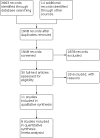
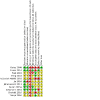

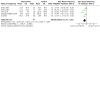
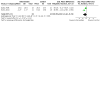
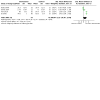
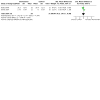
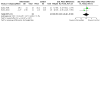
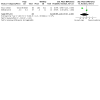
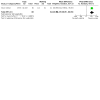
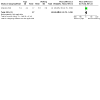
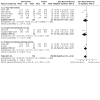
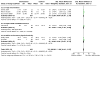

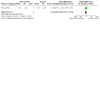
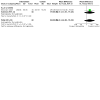
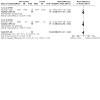
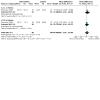
Comment in
-
Physical activity for treatment of irritable bowel syndrome: Summary of a Cochrane Review.Explore (NY). 2023 Sep-Oct;19(5):774-775. doi: 10.1016/j.explore.2023.06.011. Epub 2023 Jul 3. Explore (NY). 2023. PMID: 37652787 No abstract available.
Similar articles
-
Interventions for the management of abdominal pain in Crohn's disease and inflammatory bowel disease.Cochrane Database Syst Rev. 2021 Nov 29;11(11):CD013531. doi: 10.1002/14651858.CD013531.pub2. Cochrane Database Syst Rev. 2021. PMID: 34844288 Free PMC article.
-
Conservative, physical and surgical interventions for managing faecal incontinence and constipation in adults with central neurological diseases.Cochrane Database Syst Rev. 2024 Oct 29;10(10):CD002115. doi: 10.1002/14651858.CD002115.pub6. Cochrane Database Syst Rev. 2024. PMID: 39470206
-
Systemic pharmacological treatments for chronic plaque psoriasis: a network meta-analysis.Cochrane Database Syst Rev. 2017 Dec 22;12(12):CD011535. doi: 10.1002/14651858.CD011535.pub2. Cochrane Database Syst Rev. 2017. Update in: Cochrane Database Syst Rev. 2020 Jan 9;1:CD011535. doi: 10.1002/14651858.CD011535.pub3. PMID: 29271481 Free PMC article. Updated.
-
Non-pharmacological interventions for preventing delirium in hospitalised non-ICU patients.Cochrane Database Syst Rev. 2021 Jul 19;7(7):CD013307. doi: 10.1002/14651858.CD013307.pub2. Cochrane Database Syst Rev. 2021. PMID: 34280303 Free PMC article.
-
Sympathetic nerve blocks for persistent pain in adults with inoperable abdominopelvic cancer.Cochrane Database Syst Rev. 2024 Jun 6;6(6):CD015229. doi: 10.1002/14651858.CD015229.pub2. Cochrane Database Syst Rev. 2024. PMID: 38842054 Free PMC article.
Cited by
-
What do Cochrane systematic reviews say about the management of irritable bowel syndrome?Sao Paulo Med J. 2019 May 8;137(1):82-91. doi: 10.1590/1516-3180.2018.053740119. Sao Paulo Med J. 2019. PMID: 31116276 Free PMC article. Review.
-
Associations of daily sedentary behavior, physical activity, and sleep with irritable bowel syndrome: A prospective analysis of 362,193 participants.J Sport Health Sci. 2024 Jan;13(1):72-80. doi: 10.1016/j.jshs.2023.02.002. Epub 2023 Feb 18. J Sport Health Sci. 2024. PMID: 36801455 Free PMC article.
-
Effect of a 12-Week Walking Program Monitored by Global Physical Capacity Score (GPCS) on Circulating Cell-Free mtDNA and DNase Activity in Patients with Irritable Bowel Syndrome.Int J Mol Sci. 2024 Apr 12;25(8):4293. doi: 10.3390/ijms25084293. Int J Mol Sci. 2024. PMID: 38673878 Free PMC article.
-
The in vivo metabolic pathway of Deg-AZM and in vitro investigations into the contribution of drug metabolizing enzymes and drug transporters in the drug interactions of Deg-AZM, a clinical-stage new transgelin agonist.Front Pharmacol. 2025 Jan 8;15:1510903. doi: 10.3389/fphar.2024.1510903. eCollection 2024. Front Pharmacol. 2025. PMID: 39845780 Free PMC article.
-
The causal effects of leisure screen time on irritable bowel syndrome risk from a Mendelian randomization study.Sci Rep. 2023 Aug 14;13(1):13216. doi: 10.1038/s41598-023-40153-1. Sci Rep. 2023. PMID: 37580432 Free PMC article.
References
References to studies included in this review
Daley 2008 {published data only}
-
- Daley AJ, Grimmett C, Roberts L, Wilson S, Fatek M, Roalfe A, et al. The effects of exercise upon symptoms and quality of life in patients diagnosed with irritable bowel syndrome: a randomised controlled trial. International Journal of Sports Medicine 2008;29(9):778-82. - PubMed
Evans 2014 {published data only}
Fani 2019 {published data only (unpublished sought but not used)}
-
- Fani M, Mostamand J, Fani M, Chitsaz N, Feizi A. The effect of aerobic exercises among women with mild and moderate irritable bowel syndrome: a pilot study. Journal of Bodywork and Movement Therapies 2019;23(1):161-5. - PubMed
Feng 2010 {published data only}
-
- Feng YC, Bian BG, Pan HS, Chen CJ, Chen CR. Observation of the efficacy of Baduanjin exercise on the constipation-predominant irritable bowel syndrome of the elderly. Sport Science Research 2010;2:89-98.
Hajizadeh Maleki 2018 {published data only}
-
- Hajizadeh Maleki B, Tartibian B, Mooren FC, FitzGerald LZ, Krüger K, Chehrazi M, et al. Low-to-moderate intensity aerobic exercise training modulates irritable bowel syndrome through antioxidative and inflammatory mechanisms in women: results of a randomized controlled trial. Cytokine 2018;102:18-25. - PubMed
Jia 2016 {published data only}
-
- Jia Y. Moderate Intensity Aerobic Exercise for the Treatment of Patients with Diarrhea Predominant Irritable Bowel [Masters thesis]. Yangzhou (China): Yangzhou University, 2016.
Johannesson 2011 {published data only}
-
- Johannesson E, Simrén M, Strid H, Bajor A, Sadik R. Physical activity improves symptoms in irritable bowel syndrome: a randomized controlled trial. American Journal of Gastroenterology 2011;106:915-22. - PubMed
Kavuri 2015a {published data only}
-
- Kavuri V, Selvan P, Malamud A, Raghuram N, Selvan SR. Remedial yoga module remarkably improves symptoms in irritable bowel syndrome patients: a 12-week randomized controlled trial. European Journal of Integrative Medicine 2015;7:595-608.
Schumann 2018 {published data only}
-
- Schumann D, Butto L, Langhorst J, Dobos G, Haller D, Cramer H. Effects of yoga versus the low-FODMAP diet on gastrointestinal symptoms and the microbiota in patients with irritable bowel syndrome – a randomized controlled trial. World Congress Integrative Medicine and Health; 2017 May 3-5; Berlin, Germany.
-
- Schumann D, Langhorst J, Dobos G, Cramer H. Randomised clinical trial: yoga vs a low-FODMAP diet in patients with irritable bowel syndrome. Alimentary Pharmacology and Therapeutics 2018;47(2):203-11. - PubMed
Shahabi 2016 {published data only}
-
- Shahabi L, Naliboff BD, Shapiro D. Self-regulation evaluation of therapeutic yoga and walking for patients with irritable bowel syndrome: a pilot study. Psychology, Health and Medicine 2016;21(2):176-88. - PubMed
Taneja 2004 {published data only}
-
- Taneja L, Deepak KK, Poojary G, Acharaya IN, Pandey RM, Sharma MP. Yogic versus conventional treatment in diarrhea-predominant irritable bowel syndrome: a randomized control study. Applied Psychophysiology and Biofeedback 2003;29(1):19-33. - PubMed
References to studies excluded from this review
Banerjee 2019 {published data only}
-
- Banerjee D, Bhatt S, Chatterjee S, Sharma R. Yoga-enhanced cognitive behavioural therapy (Y-CBT) versus rifamixin-probiotic sequential treatment for irritable bowel syndrome (IBS): a randomised clinical trial. Gut 2019;68(Suppl 1):A100.
D'Silva 2019 {published data only}
-
- D'Silva A, MacQueen G, Nasser Y, Taylor LM, Vallance JK, Raman M. Yoga as a therapy for irritable bowel syndrome. Digestive Diseases & Sciences 2019;12:2503-14. - PubMed
De Schryver 2009 {published data only}
-
- De Schryver AM, Keuleman YC, Peters HP, Akkermans LM, Smout AJ, De Vries WR, et al. Effects of regular physical activity on defecation pattern in middle-aged patients complaining of chronic constipation. Scandinavian Journal of Gastroenterology 2009;40(4):422-9. - PubMed
Eriksson 2007 {published data only}
Evans 2018 {published data only}
Hamaguchi 2013 {published data only}
-
- Hamaguchi T, Tayama T, Saigou T, Tomiie T, Kanazawa M, Fukudo, S. Changes in salivary physiological stress markers induced by aromatherapy and physical therapy in patients with IBS. Psychotherapy and Psychosomatics 2013;82:41.
Johannesson 2015 {published data only}
Kavuri 2015b {published data only}
-
- Kavuri V, Selvan P, Tabesh A, Raghuram N, Selvan SR. Remedial yoga module improves symptoms of irritable bowel syndrome: replication in the wait-list group and sustained improvements at 6 months. European Journal of Integrative 2015;7(6):609-16.
Li 2008 {published data only}
-
- Li C-l, Feng H-Y, Xiao S-C, Huang H-Y. The influence of Tai Ji Quan on the therapeutic effect of irritable bowel syndrome. Journal of Practical Medical Techniques 2008;15(11):1384-6.
Liang 2010 {published data only}
-
- Liang YS, Zhang Y, Feng Y JJ. Observation of therapeutic effects of shadowboxing (Chinese shadowboxing/Tai Chi) and Acupoint Catgut embedding in the treatment for C-IBS. Hubei Journal of Traditional Chinese Medicine 2010;32:50-1.
Lui 2007 {published data only}
-
- Lui BQ, Qui Y. Effect of mountain climbing on physical quality, psychological quality and psychological health of college students. Journal of Clinical Rehabilitative Tissue Engineering Research 2007;30:6006-9.
Madhu 1988 {published data only}
-
- Madhu SV, Vij KC, Bhatnagar OP, Krishnamurthy N, Anand BS, Chuttani HK. Colonic myoelectrical activity in irritable bowel syndrome before and after treatment. Indian Journal of Gastroenterology 1988;7(1):31-3. - PubMed
Shah 2020 {published data only}
-
- Shah K, Ramos-Garcia M, Bhavsar J, Lehrer P. Mind-body treatments of irritable bowel syndrome symptoms: an updated meta-analysis. Behaviour Research & Therapy 2020;128:103462. - PubMed
Tavakoli 2019 {published data only}
Villoria 2006 {published data only}
-
- Villoria A, Serra J, Azpiroz F, Malagelada JR. Physical activity and intestinal gas clearance in patients with bloating. American Journal of Gastroenterology 2006;101:2552-7. - PubMed
Zhao 2019 {published data only}
Zhou 2019 {published data only}
-
- Zhou C, Zhao E, Li Y, Jia Y, Li F. Exercise therapy of patients with irritable bowel syndrome: a systematic review of randomized controlled trials. Neurogastroenterology & Motility 2019;31(2):e13461. - PubMed
Zia 2014 {published data only}
-
- Zia J, Cain K, Barney P, Jarrett M, Heitkempe M. What strategies do patients with irritable bowel syndrome continue to use following a 9-week comprehensive self-management program? American Journal of Gastroenterology 2014;109:S539.
References to ongoing studies
ChiCTR1800015204 {unpublished data only}
-
- Research on exercise therapy of patients with irritable bowel syndrome based on intelligent monitoring technique. Ongoing study. April 2018. Contact author for more information.
NCT04315714 {unpublished data only}
-
- Impact of a yoga intervention on chronic abdominal pain, and associations with the metagenome and metabolome in participants with IBS. Ongoing study. March 2021. Contact author for more information.
Additional references
ACG 2021
-
- Lacy BE, Pimentel M, Brenner D, Chey WD, Keefer LA, Long MD, et al. ACG clinical guideline: management of irritable bowel syndrome. American Journal of Gastroenterology 2021;116(1):17-44. - PubMed
Camilleri 2001
-
- Camilleri M. Management of the irritable bowel syndrome. Gastroenterology 2001;120(3):652-68. - PubMed
Canavan 2014
-
- Canavan C, West J, Card T. Review article: the economic impact of the irritable bowel syndrome. Alimentary Pharmacology and Therapeutics 2014;40:1023-34. - PubMed
Caspersen 1985
Chan 2014
CMO 2019
-
- Department of Health and Social Care. UK Chief Medical Officers' physical activity guidelines. Available from assets.publishing.service.gov.uk/government/uploads/system/uploads/attac... (accessed 14 November 2021).
Cohen 1988
-
- Cohen J. Statistical Power Analysis in the Behavioural Sciences. 2nd edition. Hillsdale (NJ): Lawrence Erlbaum Associates Inc, 1988.
Cong 2018
Cooney 2013
Dainese 2004
-
- Dainese R, Serra J, Azpiroz F, Malagelada JR. Effects of physical activity on intestinal gas transit and evacuation in healthy subjects. American Journal of Medicine 2004;116(8):536-9. - PubMed
Daley 2008
-
- Daley AJ, Grimmett C, Roberts L, Wilson S, Fatek M, Roalfe A, et al. The effects of exercise upon symptoms and quality of life in patients diagnosed with irritable bowel syndrome: a randomised controlled trial. International Journal of Sports Medicine 2008;29(9):778-82. - PubMed
Deeks 2021
-
- Deeks JJ, Higgins JP, Altman DG, on behalf of the Cochrane Statistical Methods Group. Chapter 10: Analysing data and undertaking meta-analyses. In: Higgins JP, Thomas J, Chandler J, Cumpston M, Li T, Page MJ, et al, editor(s). Cochrane Handbook for Systematic Reviews of Interventions Version 6.2 (updated February 2021). Cochrane, 2021. Available from training.cochrane.org/handbook/archive/v6.2.
de Oliveira 2009
-
- Oliveira EP, Burini RC. The impact of physical exercise on the gastrointestinal tract. Current Opinion in Clinical Nutrition and Metabolic Care 2009;12(5):533-8. - PubMed
De Schryver 2005
-
- De Schryver AM, Keulemans YC, Peters HP, Akkermans LM, Smout AJ, De Vries WR, et al. Effects of regular physical activity on defecation pattern in middle-aged patients complaining of chronic constipation. Scandinavian Journal Gastroenterology 2005;40(4):422-9. - PubMed
Drossman 2016
-
- Drossman DA, Hasler WL. Rome IV-functional GI disorders: disorders of gut−brain interaction. Gastroenterology 2016;150:1257-61. - PubMed
Evans 2014
Ford 2012
-
- Ford AC, Talley NJ. Irritable bowel syndrome. BMJ 2012;345:e5836. - PubMed
Francis 1997
-
- Francis CY, Morris J, Whorwell PJ. The Irritable Bowel Severity Scoring System: a simple method of monitoring irritable bowel syndrome and its progress. Alimentary Pharmacology & Therapeutics 1997;11:395-402. - PubMed
Furukawa 2006
-
- Furukawa TA, Barbui C, Cipriani A, Brambilla P, Watanabe N. Imputing missing standard deviations in meta-analyses can provide accurate results. Journal of Clinical Epidemiology 2006;59(1):7-10. - PubMed
Higgins 2011
-
- Higgins JP, Green S, editor(s). Cochrane Handbook for Systematic Reviews of Interventions Version 5.1.0 (updated March 2011). The Cochrane Collaboration, 2011. Available from training.cochrane.org/handbook/archive/v5.1/.
Higgins 2021a
-
- Higgins JP, Savović J, Page MJ, Elbers RG, Sterne JA. Chapter 8: Assessing risk of bias in a randomized trial. In: Higgins JP, Thomas J, Chandler J, Cumpston M, Li T, Page MJ, et al, editor(s). Cochrane Handbook for Systematic Reviews of Interventions Version 6.2 (updated February 2021). Cochrane, 2021. Available from training.cochrane.org/handbook/archive/v6.2.
Higgins 2021b
-
- Higgins JP, Li T, Deeks JJ. Chapter 6: Choosing effect measures and computing estimates of effect. In: Higgins JP, Thomas J, Chandler J, Cumpston M, Li T, Page MJ, et al, editor(s). Cochrane Handbook for Systematic Reviews of Interventions Version 6.2 (updated February 2021). Cochrane, 2021. Available from training.cochrane.org/handbook/archive/v6.2.
Higgins 2021c
-
- Higgins JP, Eldridge S, Li T. Chapter 23: Including variants on randomized trials. In: Higgins JP, Thomas J, Chandler J, Cumpston M, Li T, Page MJ, et al, editor(s). Cochrane Handbook for Systematic Reviews of Interventions Version 6.2 (updated February 2021). Cochrane, 2021. Available from training.cochrane.org/handbook/archive/v6.2.
Higgins 2021d
-
- Higgins JP, Thomas J, Chandler J, Cumpston M, Li T, Page MJ, et al, editor(s). Cochrane Handbook for Systematic Reviews of Interventions Version 6.2 (updated February 2021). Cochrane, 2021. Available from training.cochrane.org/handbook/archive/v6.2.
Hoffman 2014
-
- Hoffman TC, Glasziou PP, Boutron I, Milne R, Perera R, Moher D, et al. Better reporting of interventions: template for intervention description and replication (TIDieR) checklist and guide. BMJ 2014;348:g1687. - PubMed
Lefebvre 2021
-
- Lefebvre C, Glanville J, Briscoe S, Littlewood A, Marshall C, Metzendorf M-I, et al. Chapter 4: Searching for and selecting studies. In: Higgins JP, Thomas J, Chandler J, Cumpston M, Li T, Page MJ, et al, editor(s). Cochrane Handbook for Systematic Reviews of Interventions Version 6.2 (updated February 2021). Cochrane, 2021. Available from training.cochrane.org/handbook/archive/v6.2.
Leong 2003
-
- Leong SA, Barghout V, Birnbaum HG, Thibeault CE, Ben-Hamadi R, Frech F, et al. The economic consequences of irritable bowel syndrome: a US employer perspective. Archives of Internal Medicine 2003;163(8):929-35. - PubMed
Longstreth 2006
-
- Longstreth GF, Thompson WG, Chey WD, Houghton LA, Mearin F, Spiller RC. Functional bowel disorders. Gastroenterology 2006;130(5):1480-91. - PubMed
Marshall 2000
-
- Marshall M, Lockwood A, Adams C, Bradley C, Joy C, Fenton M. Unpublished rating scales – a major source of bias in randomised controlled trials of treatments for schizophrenia? British Journal of Psychiatry 2000;176:249-52. - PubMed
Maxion‐Bergemann 2006
-
- Maxion-Bergemann S, Thielecke F, Abel F, Bergemann R. Costs of irritable bowel syndrome in the UK and US. Pharmacoeconomics 2006;24(1):21-37. - PubMed
Moayyedi 2017
Murphy 2003
-
- Murphy M, Foster C, Nicholas JJ, Pignone M. Cardiovascular disorders. Primary prevention. Clinical Evidence 2003;Dec(10):154-87. - PubMed
NICE 2008
-
- National Institute for Health and Care Excellence (NICE). Irritable bowel syndrome: diagnosis and management of irritable bowel syndrome in primary care (last updated 4 April 2017). www.nice.org.uk/guidance/CG61 (accessed 12 January 2021).
Nunan 2013
Page 2021
-
- Page MJ, Higgins JP, Sterne JA. Chapter 13: Assessing risk of bias due to missing results in a synthesis. In: Higgins JP, Thomas J, Chandler J, Cumpston M, Li T, Page MJ, et al, editor(s). Cochrane Handbook for Systematic Reviews of Interventions Version 6.2 (updated February 2021). Available from training.cochrane.org/handbook/archive/v6.2.
Peters 2001
Quigley 2015
-
- Quigley EM, Fried M, Gwee KA, Khalif I, Hungin P, Lindberg G, et al. Irritable bowel syndrome: a global perspective. Available at: www.worldgastroenterology.org/UserFiles/file/guidelines/irritable-bowel-... (accessed 14 July 2018). - PubMed
Review Manager Web 2021 [Computer program]
-
- Review Manager Web (RevMan Web). Available at: revman.cochrane.org: The Cochrane Collaboration, 2021.
Schumann 2016
-
- Schumann D, Anheyer D, Lauche R, Dobos G, Langhorst J, Cramer H. Effect of yoga in the therapy of irritable bowel syndrome: a systematic review. Clinical Gastroenterology and Hepatology 2016;14(12):1720-31. - PubMed
Schünemann 2021
-
- Schünemann HJ, Vist GE, Higgins JP, Santesso N, Deeks JJ, Glasziou P, et al. Chapter 15: Interpreting results and drawing conclusions. In: Higgins JP, Thomas J, Chandler J, Cumpston M, Li T, Page MJ, et al, editor(s). Cochrane Handbook for Systematic Reviews of Interventions Version 6.2 (updated February 2021). Cochrane, 2021. Available from training.cochrane.org/handbook/archive/v6.2.
Song 2018
-
- Song KH, Jung HK, Kim HJ, Koo HS, Kwon YH, Shin HD, et al, The Clinical Practice Guidelines Group Under the Korean Society of Neurogastroenterology and Motility. Clinical practice guidelines for irritable bowel syndrome in Korea, 2017 revised edition. Journal of Neurogastroenterology and Motility 2018;24:197-215. - PMC - PubMed
Spiegel 2009
Spiller 2007a
-
- Spiller R. Clinical update: irritable bowel syndrome. Lancet 2007;369(9573):1586-8. - PubMed
Spiller 2007b
Talley 1990
Thomas 2006
Wang 2016
-
- Wang Q, Xu KQ, Qin XR, Wen-Lu, Yan-Liu, Wang XY. Association between physical activity and inflammatory bowel disease risk: a meta-analysis. Digestive and Liver Disease 2016;48(12):1425-31. - PubMed
References to other published versions of this review
Publication types
MeSH terms
Grants and funding
LinkOut - more resources
Full Text Sources

